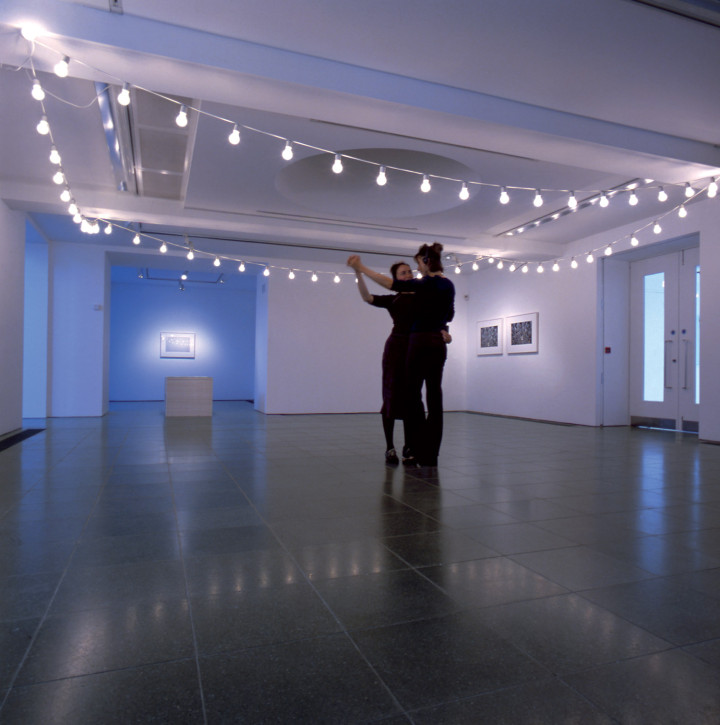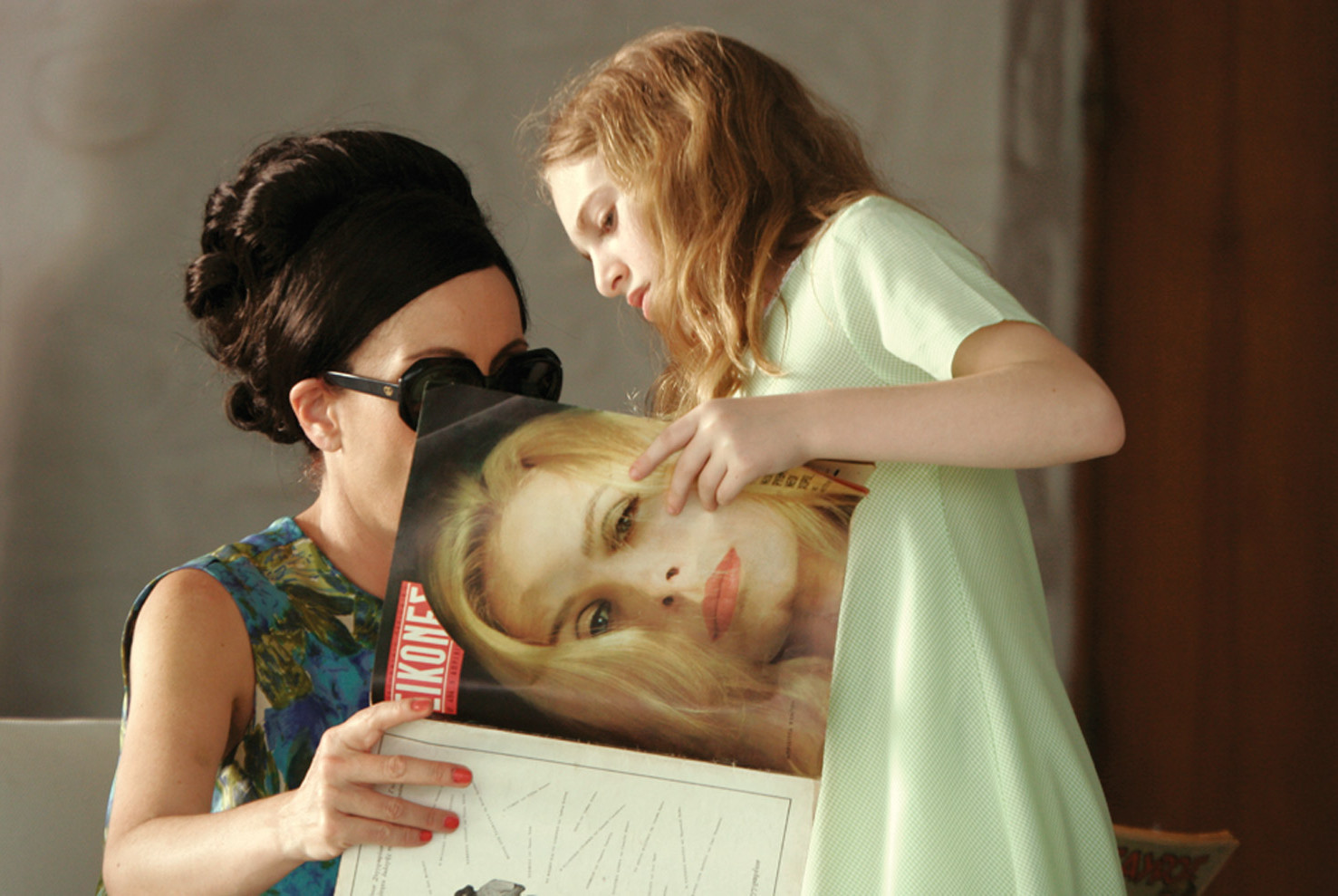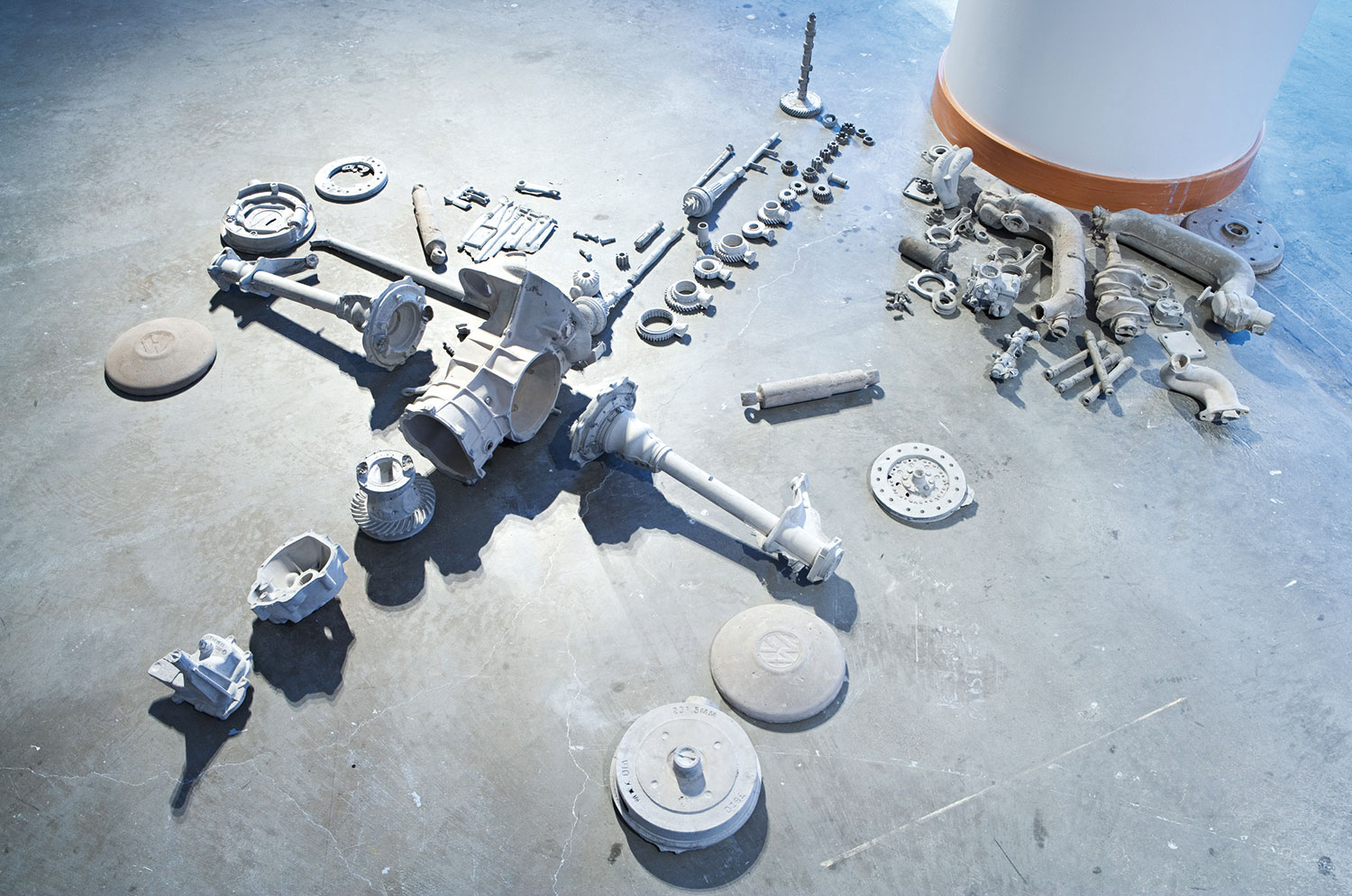
The following interview originally appeared in Flash Art International No. 161 (November-December 1991) and was conducted by Robert Nickas, an art critic and curator based in New York.
Robert Nickas: I’ve been thinking about childhood, games, and play in relation to your work. In the welcome mat piece you hid things underneath the mats — a playing card, keys, snapshots. Behind some of the “Bloodwork” pieces are drawings and photos — hidden personal items. It’s true that you insert sexual and political content into a seemingly ‘mute’ carrier — a minimal object — turning it into a kind of conscientious objector, but this device of ‘hide and seek’ made me focus on memory rooted in childhood. There is a free relationship to the world which lasts very briefly in our lives before rules and biases are set, and we are captive to specific patterns of behavior. This seems important to your work, and I wanted to expand on its already established reading.
Felix Gonzalez-Torres: A reading that has been overlooked is the radicality of certain forms of distribution. My stacks are made of paper, an endless stack of paper. This is not a unique piece. What is this thing? A two- or three-dimensional object? Is the work the certificate of authenticity or the piece itself? I guess we can go into Lacanian model of child before entering language, the law, the father, and that moment when our relationship to objects seems more free, but I really wonder if it is. Someone’s agenda has been enacted to define ‘public’ and ‘private.’ We’re really talking about private property because there is no private space anymore. Our intimate desires, fantasies, dreams are ruled and intercepted by the public sphere. There is a lot of memory involved in my work, but I want to stress that the formal aspects are very deliberate. As for the welcome mat piece, I’m fascinated buy the minimalist work of the late ’60s, and I always wanted to work with rubber… how it smells, how it feels. But how could I, at this point in history? It had to have a certain irony, a certain edge.
RN: Your welcome mat is the friendly version of minimal art.
FGT: It’s also bastardized, displayed almost the same way it would be in a hardware store. One thing that threatens the current dominant narrative is so-called perversion, whatever that is. There’s a lot of meaning and freedom to be found there. To hide something underneath this piece felt perverse on many levels. When you have a show and sell things, you show them, you don’t hide them. With “Every Week There is Something Different,” the exhibition was almost an inhibition. Things were in the storeroom or the back room, and didn’t last the month.
RN: The drawings and photos behind the “Bloodwork” pieces reminded me of the boxes for On Kawara’s date paintings, where you find the newspaper or that day’s front page which grounds the piece in time and place. The art object becomes a marker of sorts between public and private realms, memory and the past.
FGT: Although the dates in Kawara’s paintings are abstract, they are also very personal. When I say “1968” or “1967,” I’m sure you have strong memories of those years. ‘Meaning’ is created once something can be related to personal experience.
RN: Although your works are untitled, there are parenthetical subtitles. Even the titles have a hidden part to them. Behind every refusal to name or speak is the clue which speaks volumes: Double Fear, Still Life, Placebo, Death By Gun — all very loaded, off to the side, unspoken.
FGT: Things are suggested or alluded to discreetly. The work is untitled because ‘meaning’ is always shifting in time and place. Also, this isn’t really my language, but the language I learned. So I’m reluctant to give something a name imposed on me. You have to deal with who your public is. Who are you making these days for? Who are you trying to establish a dialogue with?
RN: I believe art is made for no more than five or six people you know, and anyone else who gets something out of it, it’s just extra.
FGT: I think at times my only public has been my boyfriend, Ross.

RN: In the last few years there’s been a shift away from ‘sloganeering’ art that appropriated the media, towards a more personal voice. You put something out which people can approach and can take, but you’re saying something, and in a way which isn’t threatening, but open.
FGT: That work had a specific purpose in trying to disrupt the dominant order. But things have changed. I may make objects without language, but everything in culture happens within language. Nothing happens outside of language. The dominant narrative is not static. It changes very quickly. It requires new modes of contestation.
RN: So where do we go from here?
FGT: I recently saw Marlin Fitzwater on a televised press conference, and when he was asked about the huge anti-war demonstrations, he replied without skipping a beat, “It’s all part of the process.” That is just mind-boggling. It’s all part of the process. The only people who learned anything in the ’60s were on the right. Those people weren’t crying at the Freedom Foundation. They were preparing. It’s so clear that our strategy has to change.
RN: With the first stacks, you let people have a part of the piece, and take it away.
FGT: I was teaching at the time, and the one thing that terrified me to no end was that most of these kids had no historical references. They were literally living in the MTV limbo. When you see that the Republican Party’s biggest voting block is kids below thirty, things have changed. Now you can’t trust someone under thirty. So those pieces were an attempt to create a kind of historical picture, a reminder, to reinstate certain events. At this point to recall history seems impolite.
RN: They were on blank backgrounds, without pictures, only events floating through time.
FGT: The blank spaces served as a screen for people to project themselves into those events. I started making those pieces to deal with very specific, crucial issues, with how information is transformed into meaning. Right now we have an explosion of information, but an implosion of meaning. Do you think it means anything that insurance companies are going bankrupt? And what about the lack of health care? Or the savings and loan bailout? The real threat to the American family is a photograph of two men kissing. That is meaningful.
RN: With the stack pieces, you can take a rolled up sheet from the gallery and ‘get the piece,’ but there’s no way you can remove it entirely. It’s portable, yet unmovable.
FGT: Even if you take it all away, more can be printed. Even a ‘unique’ stack sometimes gets reprinted and shown in two places in the same time.
RN: They’re comprised of ‘endless copies.’ In terms of the subject of time, the pieces being made of a vulnerable material, and the fact that they can easily disappear, being endless means it can also reappear. As much as we want to be in the world, our lives are cut short, but art is something that can be left behind, as a marker in space. In your work there’s a recognition of the transitory nature of things, of our own lives.
FGT: Time is something that scares me… or used to. The piece I made with the two clocks was the scariest thing I have ever done. I wanted to face it. I wanted those two clocks right in front of me, ticking. The idea of pieces being endless happened at that point because I was losing someone very important. I made the first stacks in 1989.
RN: Veteran’s Day Sale and Memorial Day Weekend.
FGT: Right. They were on the floor. Before that I put them on stands, but later I thought, just drop it on the floor, it looks more like a printing house. With my first show at Andrea’s [Andrea Rosen Gallery] I wanted to do a show that, in theory, could actually disappear. But in a week it could be reprinted and reappear. It works as a metaphor for many things; we are everywhere, we will always be here no matter what they do. But it’s also about vulnerability. With people taking the work, I want to ask them what they’re going to do with it. At the same time, you have to let go.

RN: What you leave behind is anti-monumental, not only due to the temporality, but also to the scale. You even have a piece called Monument, which is very unimposing.
FGT: One day I was going through The New York Times — my source of inspiration — and there was a huge ad for a Veteran’s Day sale, and I thought, “In our culture we no longer celebrate, we go shopping.” Macy’s has a huge sale and that’s the celebration. With this piece I wanted to investigate monumentality and public art. There’s a big difference between being ‘public’ and being outdoors.
RN: You wonder if the sale at Macy’s isn’t closer to being public art — which the public normally doesn’t like anyway.
FGT: It has no relation to them whatsoever. Someone made a big thing in their studio and hauled it outside.
RN: Almost anytime something is printed it takes on meaning by the mere fact of its appearance in print. It becomes real. Even when you take a line you wrote yourself, and present it as printed information, you literally inscribe it, give it weight.
FGT: When information you’re used to getting in a particular medium suddenly shifts to another, you realize there’s a break in the narrative. Again, this comes from my fascination with the newspaper. Recently, I’ve made pieces where I placed a newsclipping in the center of a very large sheet of paper. That’s not usually how news gets presented. By decontextualizing, I’m sometimes able to pinpoint one of those breaks, and we might realize we’re being taken for a ride. For someone involved in culture, the most exciting thing is to look at those breaks, like Fitzwater’s “It’s all part of the process.”
RN: His remark makes me ask, is it possible to say or do anything that can’t be used against me? Or is everything we say and do somehow part of our undoing?
FGT: Yes, everything I say can be used against me. This interview can be used against me. But I like to take stands and say what I believe. It might not be the best idea, but I’m still proposing the radical idea of trying to make this a better place for everyone. That’s really what I’m all about. I trust that agenda. That’s why I’m not afraid of power. That’s why I don’t like the term ‘alternatives.’ Alternatives to what?
RN: Can you talk about how the candy pieces relate to memory and the body?
FGT: The pieces called “Lover Boys” are piles of candy based on body weights. I use my own weight or mine and Ross’s together. If I do a portrait of someone, I use their weight.
RN: You implicate the body of the viewer as well. You’re probably the first artist to get viewers to put part of a work in their mouth and suck on it.
FGT: That’s good. Oral gratification. The USA Today piece was a ‘sugar rush.’ With patriotism you get really high, very euphoric. But then you come down…
RN: The last candy piece was Placebo. It had the greatest presence of all your work thus far. It was just visually stunning. But we know what a placebo is, it’s a deception.
FGT: It’s a mean piece.
RN: It was your most beautiful, ‘theatrical’ piece, but how was it mean?
FGT: Beautiful things can be very deceiving. They make you feel good for a little while. It’s a placebo because it’s an artwork. It’s a substitution for what? Yes, it was very beautiful… but only for five days.

RN: Where did the idea to change the snow each week come from?
FGT: I thought there’s no rule that I have to leave something in the gallery for the entire month. I’ll change it, create some kind of narrative… put it out and take it back, create something and then destroy it, create a tension that nothing is stable. You can’t even depend on a one-month show.
RN: I was reminded of Robert Morris’s Continuous Project Altered Daily from 1969. Looking at the photos you see something in process, a situation questioning the stability of the artwork — did it have a resolution or final form? — and notions of progress. But in your show there wasn’t one piece evolving through the month. Pieces were brought to the gallery and removed. Or one piece overlapped another and your reading changed. Your show inserted some doubt into the framework of an exhibition, but also some reality; what we think, and all things naturally change.
FGT: When you don’t have a studio you make mistakes in public, you change your underwear in public. I don’t make works at home or even keep works here. I make projects and work for specific shows. If it’s bad, I’m fucked for the whole month. That was part of it. But I also wanted to structure the show in terms of a narrative, as if each week was a sentence in a paragraph. During the first week the gallery looked like the International Center of Photography, with cream-colored walls and nicely framed pictures. Very tasteful. But when I brought in the Go-Go Dance Platform with an almost naked dancer shaking his dick around, the meaning was altered… a little.
RN: Even without the dancer I thought it was really kinky. Kinky minimalism.
FGT: It was mostly seen without the dancer because he was only there a few minutes each day, and you couldn’t hear the music because he wore a Walkman. It wasn’t about making a spectacle of him, but making these images inscribed in stone on the foundation of the Museum of Natural History, these men who represent what we should aspire to be – soldier, humanitarian, explorer…
RN: … mean something else. A little naked truth.
FGT: By the third week when I showed the “Bloodworks,” which are just graphs, the gallery was very clinical. My attempt was not only to play with form, but to create a very specific meaning by the end of the exhibition. It wasn’t just to show my wares — from the warehouse to the showroom — it was about using the gallery as a testing ground, and in many ways subverting the meaning of the work itself, as well as the situation, the rules, or place in which this work happens to be.
RN: After that show I wondered where things might go.
FGT: I don’t feel comfortable answering a question like, “Am I creating a new body of work?” I always go back and forth. I have a repertoire that I borrow from whenever the need arises. I really don’t know what will come next… maybe nothing. Maybe a semester of just teaching. But right now it’s a little more difficult, to tell you the truth, because not having a dialogue with Ross is a real handicap. Now the dialogue is just one person.





